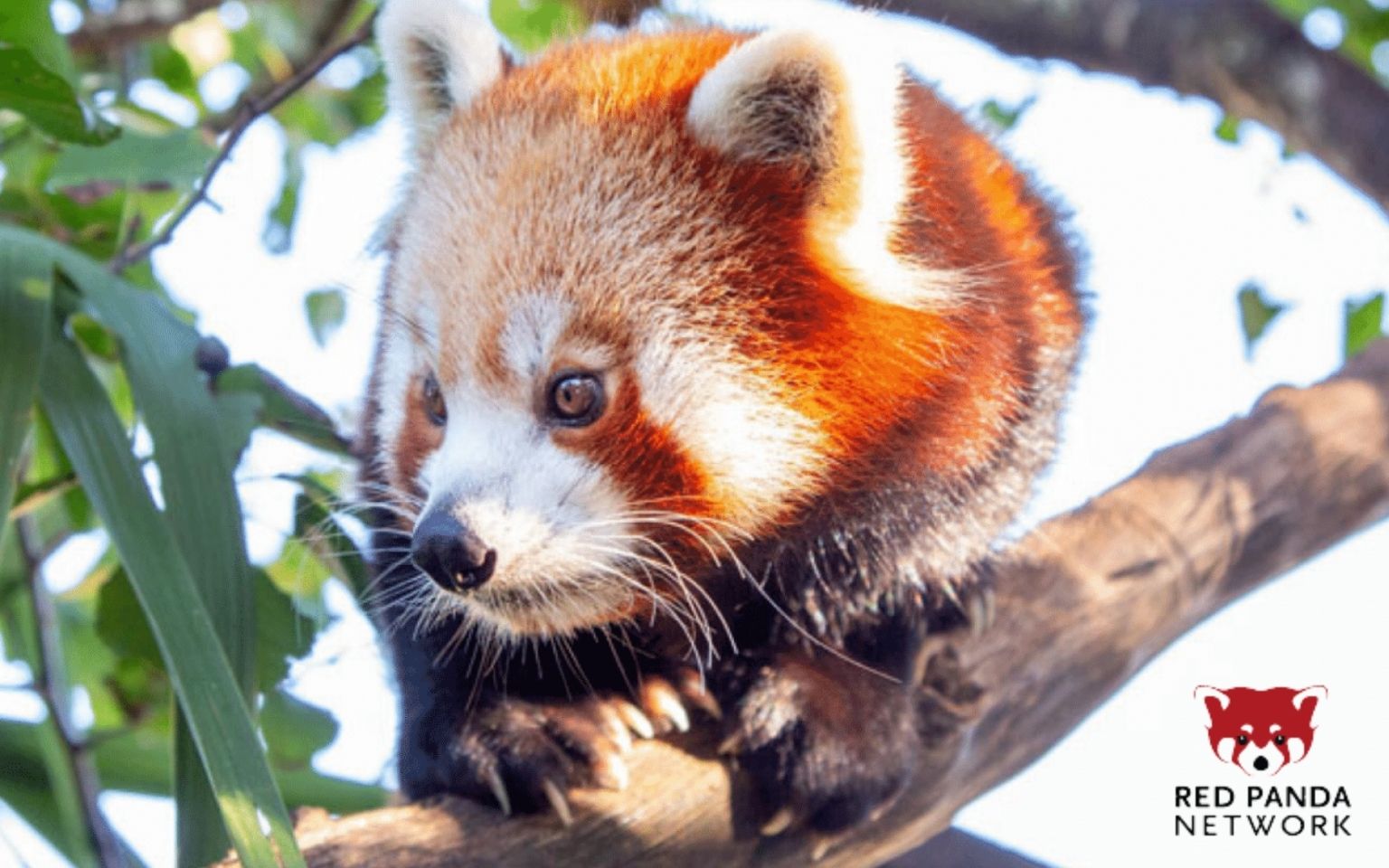Growing up, Man Kumari Nembang would regularly see red pandas in the forest on the edge of her village. These small, cat-like animals with their bright fur would defy gravity as they balanced along thin branches – or climbed down a tree trunk head first! But gradually, as she grew older and had children of her own, she saw the red pandas less and less often. She would often worry about their disappearance and wondered what she, a single mother, could do to protect them.
Five years ago, she jumped at the chance to protect her forests and support her three children by joining the Red Panda Network Forest Guardian program. In those five years, she has patrolled hundreds of miles of habitat, trained in anti-poaching laws and techniques, and become an educator within her community. We are so proud to sponsor RPN Forest Guardians like Man Kumari through our 1% donation for endangered species.
Is it a fox? Is it a bear? No, it’s a red panda!
Red pandas might look like the tiny relatives of giant pandas, but they don’t even belong to the same family! In fact, they are the only members of their own family Ailuridae, with their closest relatives being raccoons and weasels. Red pandas are sometimes known as the ‘first pandas’ – as they were discovered nearly 50 years before the giant panda. They have a lot of names that speak to their beauty, including their scientific name, which means ‘fire-colored cat’.
Red pandas spend their time exploring their treetop home throughout the Himalayas. They range from Nepal to Myanmar – anywhere they can find delicious bamboo! They’re normally alone, only finding a companion in breeding season. Now, there may be as few as 2,500 left in the wild.
Seeing red.
Our global population of small, red cat-bears has declined by 50% in the last 20 years – and it’s because of us. Humans have cut down acres of red panda forests to make way for mining, roads, settlements, and agricultural land – at the expense of the species living in these forests. We’re fragmenting the forests too, separating small patches of forest and making it harder for animals to pass between the areas.
Luckily, the news isn’t all bad. Because thanks to the Red Panda Network, there’s hope for red pandas and their forest homes.
Meet Red Panda Network.
Founded in 2007, Red Panda Network is dedicated to conserving wild red pandas by empowering the local community. Poaching and habitat destruction is driven by a lack of knowledge or alternative ways of living. RPN gives communities the tools to care for their forests.
Their projects include research into red panda populations and health, outreach to local communities, training, and pay of Forest Guardians, habitat restoration, and tree planting. Their staff live locally and understand the specific challenges and attitudes towards red pandas in the area. And as an umbrella species, the conservation of red pandas benefits other species, including leopards, pangolins, and bears.
“While it’s easy to feel disheartened about the global status of red pandas, we’re seeing incredible things happen in the areas we work. Local people are committing to protecting this endangered species and red panda numbers are improving in eastern Nepal.”
Terrance Fleming, Development Manager, Red Panda Network.
How can we help?
As part of our commitment to endangered species around the world, we donate 1% each month. Our donation will help RPN to expand their team of Forest Guardians and reforest habitat in the PIT corridor – a critical area for red panda conservation.
You can get involved too. If red pandas have captured your heart, you can symbolically adopt a red panda spotted by RPN’s Forest Guardians on their patrols, or become a Panda Guardian with a monthly gift. Or if you like a challenge, fundraising helps to raise money and spread awareness of their work.
Huge thanks to our clients, supporters, and LEX team. Without you, we wouldn’t be able to support organizations like RPN and maintain our commitment to give back to endangered species.



